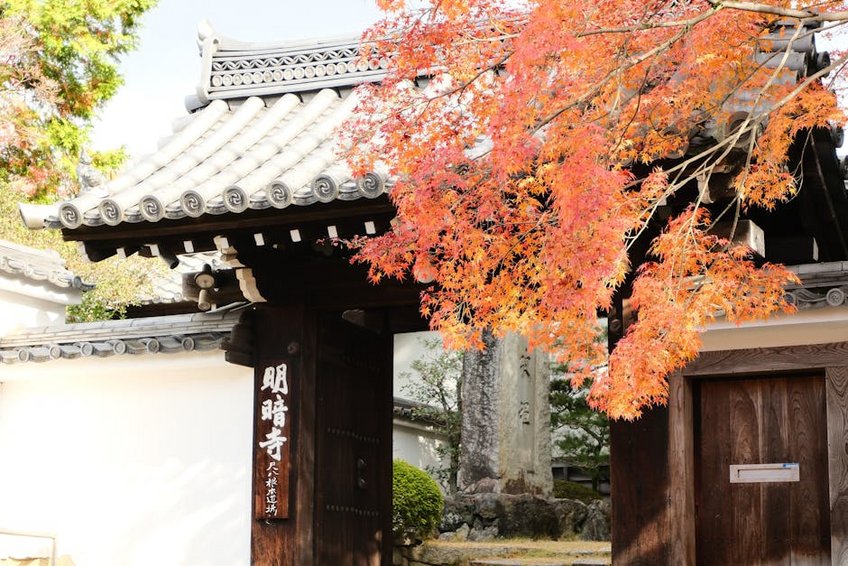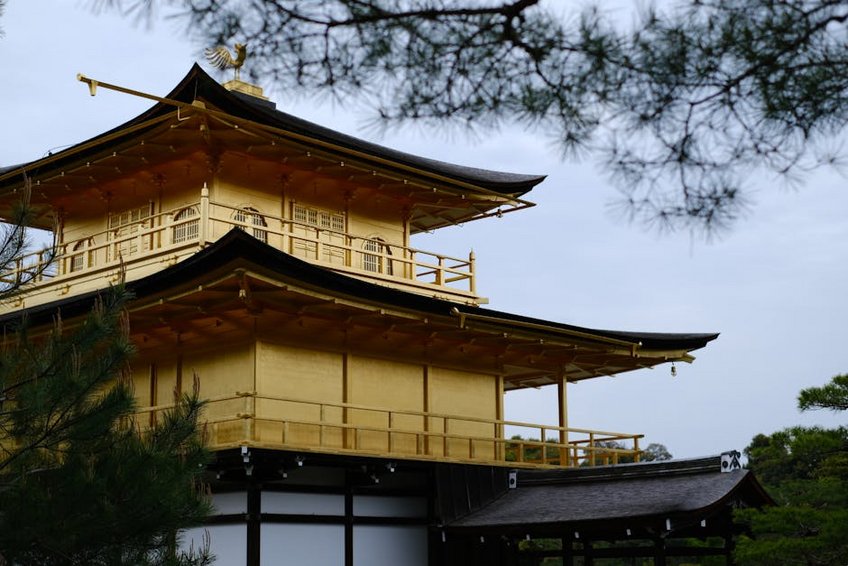Kyoto Autumn Temples: Your Ultimate Guide to Fall Foliage Magic
Experiencing Kyoto autumn temples is like stepping into a living painting where ancient architecture meets nature’s most spectacular color show. As the maple leaves transform into brilliant shades of crimson, gold, and orange, Kyoto’s historic temples become even more magical, creating unforgettable moments that will stay with you forever. Whether you’re a first-time visitor or returning to witness this seasonal spectacle, the combination of spiritual serenity and visual splendor makes autumn the absolute best time to explore Japan’s cultural heart. The crisp air, fewer crowds compared to spring, and that magical golden hour light create perfect conditions for photography and contemplation. From the iconic Kiyomizu-dera to hidden gems tucked away in the mountains, each temple offers a unique perspective on this annual transformation that draws travelers from around the world.
Kyoto Autumn Temples Essential Information – What You Need to Know
Understanding the basics of visiting Kyoto autumn temples will significantly enhance your experience and help you make the most of your trip. The autumn foliage season typically runs from mid-November to early December, though timing varies annually based on weather patterns. Temple visiting hours generally extend from 9:00 AM to 5:00 PM, with many temples offering special evening illumination events that are absolutely worth experiencing. Admission fees range from $5-15 per temple, with combination tickets available at some locations. Remember that temples are active religious sites, so respectful behavior is essential – speak quietly, follow photography rules, and dress modestly. The terrain often involves stone paths and steps, so comfortable walking shoes are a must for exploring these historic grounds safely.
Best Viewing Periods and Peak Colors
- Early November: Leaves begin changing at higher elevations like Kurama and Ohara areas
- Mid-November: Central Kyoto temples like Tofuku-ji and Kiyomizu-dera reach peak colors
- Late November: Northern temples like Tenryu-ji and southern areas show best foliage
- Early December: Some temples maintain color while others begin shedding leaves
- Budget travelers: $70-100/day including temple admissions, public transportation, and affordable meals
- Mid-range experience: $150-200/day covering nicer accommodation, taxi between distant temples, and quality dining
- Luxury visit: $300+/day featuring premium hotels, private guides, and exclusive cultural experiences
- Official Kyoto Travel Guide
- Japan Guide Autumn Foliage Forecast
Temple Etiquette and Cultural Considerations
When visiting Kyoto autumn temples, remember you’re entering sacred spaces where locals come for prayer and reflection. Bow slightly when entering gates, avoid loud conversations, and never touch religious artifacts without permission. Photography is generally permitted in outdoor areas but often prohibited inside temple buildings. Many temples require removing shoes before entering certain structures, so wear slip-on footwear for convenience. If you encounter purification fountains at entrances, use the ladle to clean your hands and mouth as locals do – it’s a respectful gesture that enhances your cultural experience. Donations boxes are present at most temples; contributing even small amounts helps maintain these historic sites.

Kyoto Autumn Temples Planning Your Trip – Season, Budget, and Preparation
Planning your Kyoto autumn temples visit requires strategic timing and budget considerations to ensure you experience the best of the season without breaking the bank. The autumn foliage period is Kyoto’s second busiest season after cherry blossom time, meaning accommodation prices increase by 30-50% and popular temples can get crowded, especially on weekends. Booking flights and hotels 3-4 months in advance is crucial for securing reasonable rates. Consider visiting on weekdays rather than weekends when local visitors swell crowds at popular spots. The weather during November typically ranges from 8-15°C (46-59°F) with minimal rainfall, making it perfect for temple hopping. Layered clothing works best as temperatures fluctuate throughout the day, and comfortable walking shoes are non-negotiable for navigating temple grounds.
Best Time to Visit Kyoto Autumn Temples
The optimal time for experiencing Kyoto autumn temples falls between November 15th and 30th, when the majority of temples reach peak coloration. However, this varies by elevation and tree species – higher altitude temples like Kurama-dera often peak in early November, while urban temples like Shoren-in hit their stride in late November. Weekday mornings between 8:00-10:00 AM offer the best light for photography and thinnest crowds. Evening illuminations typically run from sunset until 9:00 PM and create magical atmospheres, though these sessions attract larger crowds. Checking the official Kyoto foliage forecast (released in early November) helps pinpoint exact timing for your visit dates.
Budget Planning and Costs
Essential Preparation Checklist
Preparing properly for your Kyoto autumn temples adventure ensures a smooth and enjoyable experience. Secure your Japan Rail Pass before arrival if planning side trips, though local transportation within Kyoto is best handled with a reloadable IC card. Download offline maps and translation apps since English signage is limited at smaller temples. Pack layers including a light jacket, comfortable walking shoes with good grip, and a small backpack for carrying water and essentials. Reserve accommodation near your priority temple areas – eastern Higashiyama offers walking access to multiple temples while northern areas provide quieter experiences. Learn basic Japanese phrases like “sumimasen” (excuse me) and “kirei” (beautiful) to enhance interactions with locals.
Kyoto Autumn Temples Top Attractions and Activities – Must-See Locations
Kyoto boasts over 1,600 Buddhist temples, but certain locations offer particularly spectacular autumn experiences that deserve priority planning. The most famous Kyoto autumn temples combine incredible architecture with meticulously maintained gardens that become canvases of color during peak season. Tofuku-ji Temple’s Tsutenkyo Bridge provides breathtaking views over a valley of maple trees that appear to be on fire with color. Kiyomizu-dera’s wooden stage overlooks a sea of crimson leaves with city views beyond. Eikando Zenrin-ji transforms into an illumination masterpiece after dark, with carefully placed lights creating magical reflections in pond waters. Lesser-known gems like Entoku-in Temple offer equally stunning foliage with fraction of the crowds, perfect for those seeking quieter contemplation amidst autumn’s beauty.
Must-See Highlights
No visit to Kyoto autumn temples is complete without experiencing these iconic locations. Kiyomizu-dera’s wooden stage extends over hillside maples creating unforgettable photo opportunities, especially during early morning when mist often enhances the magical atmosphere. Tofuku-ji’s Tsutenkyo Bridge spans a ravine filled with maple trees that create a tunnel of color – arrive at opening to avoid the crowds that form by mid-morning. Nanzen-ji Temple’s massive sanmon gate frames autumn colors perfectly, while its aqueduct and sub-temples offer diverse photographic compositions. Kodaiji Temple’s evening illuminations blend traditional architecture with modern light artistry, creating surreal experiences that highlight both foliage and structures in dramatic fashion.
Hidden Gems and Local Favorites
Beyond the famous spots, several lesser-known Kyoto autumn temples offer equally spectacular experiences without the overwhelming crowds. Entoku-in Temple, often overlooked near Kodaiji, features a stunning dry landscape garden framed by maple trees that create beautiful contrasts between stone and foliage. Shoren-in Temple’s garden becomes a carpet of fallen leaves that crunch underfoot as you explore its peaceful paths. Jakko-in Temple in Ohara village offers a rural temple experience where autumn colors blend with traditional thatched roof houses and mountain scenery. Manshu-in Temple’s carefully composed gardens demonstrate the Japanese art of borrowed scenery, framing autumn colors with architectural elements in ways that feel both natural and intentionally designed.
Kyoto Autumn Temples Practical Travel Information – Transportation and Accommodation
Navigating Kyoto during autumn foliage season requires smart transportation choices and strategic accommodation planning to maximize your temple viewing experience. The city’s efficient public transportation system includes subways, buses, and trains that serve most major temple areas, though walking between nearby temples often proves more enjoyable. Taxis become valuable for reaching distant temples or when your feet need respite after long walking days. Accommodation near eastern Kyoto (Higashiyama area) offers walking access to multiple temples but comes with premium pricing during peak season. Staying near central stations like Kyoto Station provides better transportation options but requires daily commuting to temple areas. Consider splitting your stay between different neighborhoods to experience varied aspects of Kyoto’s autumn beauty.
| Transportation Method | Best For | Cost Range (USD) |
|---|---|---|
| City Buses | Accessing multiple temples along routes | $2-4 per ride |
| Subway | Quick north-south travel | $2-5 per ride |
| Taxi | Distant temples or group travel | $15-30 per trip |
| Bicycle Rental | Exploring temple neighborhoods | $10-15 per day |
| Walking | Temples in Higashiyama area | Free |


